Has Covid changed fashion forever?
Activewear fashion brands are booming in this WFH world. Will it forever change what we wear?
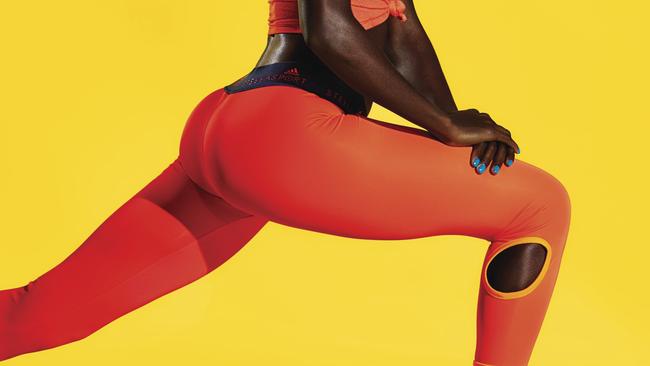
The turning point came on April 20. Australia was one month into its response to Covid-19, with shutdowns happening around the country. People were scared. Many were losing jobs or being stood down. Even those still in work were being cautious. No one was spending. Pip Edwards and Claire Tregoning, founders of activewear label P.E Nation, went into their office in Sydney bracing themselves for the latest sales results.
Like all business owners at this time, Edwards and Tregoning were worried. Since launching the label in 2016 it had become one of the stars of the Australian fashion industry for its fashion-forward take on sportswear, its 80s- and 90s-inspired block-colour, logo-emblazoned pieces instantly recognisable from Bondi to Broome. But now the global fashion industry was in turmoil: supply chains had been blocked and product delayed as manufacturing centres from China to Italy closed down. Even if product did arrive, retailers cancelled or postponed orders across the board, leaving brands either overwhelmed with stock or scrambling to cancel what was still to come. Brands and retailers alike were trying to forecast for the months ahead without knowing how the pandemic would play out. “We had no idea where it was going,” says Tregoning. But on that morning in April, studying the sales figures, the pair got a shock. “There was this one day when we dropped a collection and it just flew [out the door],” says Edwards. “And it not only flew on our website, it skyrocketed in the States. Literally by 10 times in the States. We were like, ‘What just happened?’”
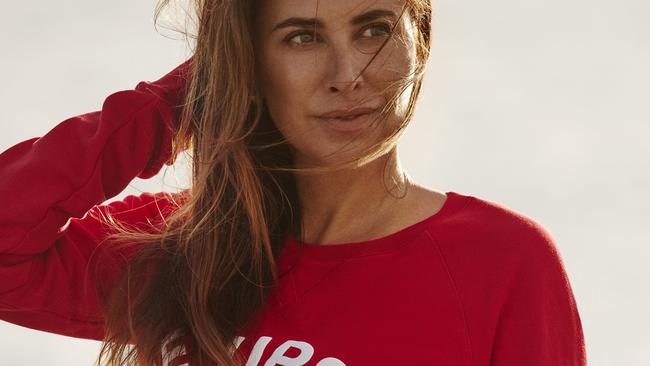
Whether you live in New York or Newcastle, theCovid-19 pandemic has meant adapting to work from home. It became known as #WFH as millions of people set up offices in their spare rooms or typed reports from their couches. Suddenly, tailored workwear was out, comfort was in. If your boss doesn’t have to look at you, you might as well be in your trackies, right? “They’re hungry for tracksuits,” says Edwards. “There is no way you could keep a hoodie, a sweat or a track pant on the shelf. It’s like they’ve never worn tracksuits in their life.”
It’s a story on repeat from brands and retailers around the globe. Julie Stevanja, the Sydney-based founder of fashion-centric activewear retailer Stylerunner, says tracksuit sales are up 80 per cent on the same period last year. “I have pretty much lived in tracksuits the past six months,” she says. “It has become the unofficial work-from-home uniform. Your first thoughts are around comfort. Even for a Zoom call, you have your business shirt on and your tracksuit on the bottom.” April was similarly the turning point for Stevanja’s business, with August a “record month” for the business, she says.
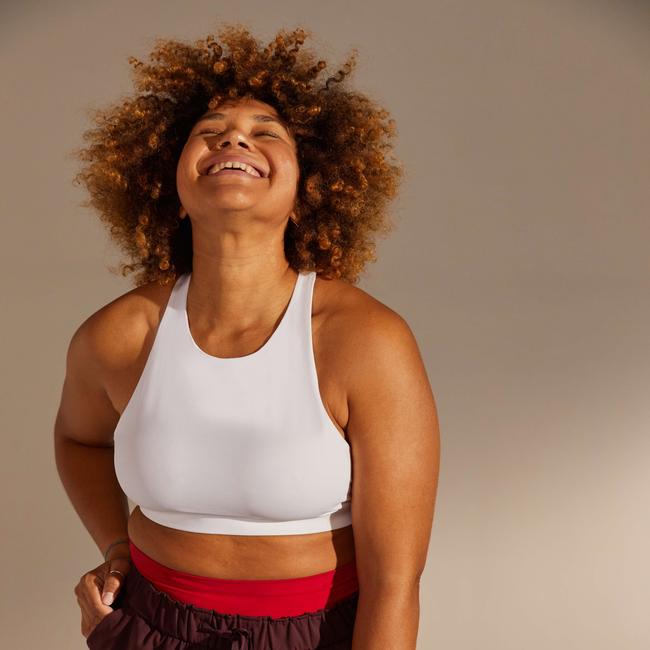
Vancouver-based Lululemon, which has its roots in yoga, reported a similar shift. With 506 stores globally, 31 in Australia, it has a huge bricks-and-mortar footprint. “By the end of April we had shut the majority of our stores down,” says Sun Choe, chief product officer for the brand. “For a couple of weeks, we were anxious and worried about the balance of the year. Then something happened and everyone just started shopping online. We just did everything to drive that channel. We’ve been able to leverage the massive change in consumer behaviour.” Lululemon’s recently released second-quarter results show that online sales soared by 157 per cent on the same period last year; total sales for the quarter are up three per cent on last year.
Department store David Jones has also been thankful for activewear sales during Covid. “It’s been huge,” says Bridget Veals, general manager of womenswear. “Activewear, lounge wear (including hoodies and tracksuits) and slippers have been some of the standout categories, and that continues even as the states have opened up.”
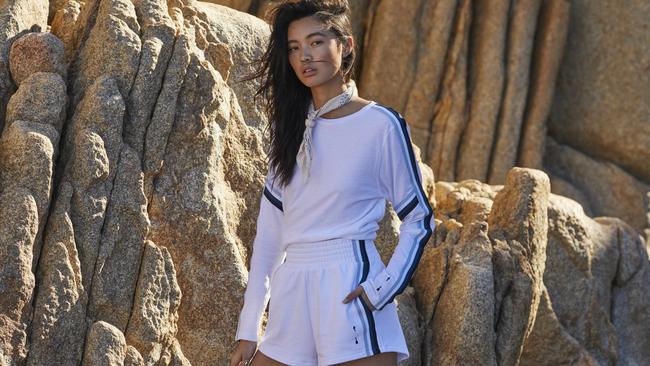
Veals says that dresses and men’s formal wear have “definitely been hit hard” during the pandemic. Conversely, she says that P.E Nation, its top-selling activewear brand, has seen growth in sales of 100 per cent, adding: “We cannot keep it in stock.” (P.E Nation’s total online sales have grown by some 500 per cent during Covid, although Edwards and Tregoning concede that that’s from a low base, following on from a tough summer with its devastating bushfire season and low consumer confidence.)
Sydney-based label The Upside’s leisure wear category – which includes sweats and tees – has seen a 50 per cent increase in sales during the pandemic on the same period last year. “With the shift to working from home we see that people are looking to a more low-key, versatile wardrobe, and we think this trend is here to stay,” says The Upside’s founder Jodhi Meares. “People have now reimagined what their normal wardrobe looks like.”
If sales of tracksuits and hoodies are skyrocketing, the activewear category more generally is still power-walking up an incline without cracking a sweat. For many people, working from home has also meant working out from home. At Lululemon, the first months of lockdowns saw “huge success in our yoga mats and equipment... [it] went crazy and was a global phenomenon”, says Choe. The brand’s signature leggings “continue to see strength and are typically one of our strongest categories – Covid didn’t change that”, she adds.
In August, P.E Nation dipped its toe in the water of a new category and dropped 200 swimsuits on its website, “in the middle of winter, with nowhere to go – and sold out”, says Edwards. “We thought we were crazy. We could have ordered 500 units.”

The fashion industry at large is wishing it could replicate the success of the activewear segment right now. A report from Business of Fashion and McKinsey & Company in April suggested the global fashion market could contract by as much as 30 per cent this year. In fact, as Edwards observes, “other brands are all now pivoting into this category”, hoping to bolster their bottom lines.
Even before the pandemic, the activewear market was one of the biggest growth categories in the industry, thanks to the surging interest in health, wellness and activities such as yoga and Pilates. Where once an old T-shirt and track pants were good enough for the gym or practising downward-facing dog, now only the best in matching sets of Lycra will do. According to a March report by Allied Market Research, the global activewear market was valued at $167.7bn in 2018; it is expected to grow to $258bn by 2026. In Australia, IBISWorld estimates the current $2.8bn market will grow to $3.1bn in the same time frame.
Such is its popularity that the wearing of activewear for non-active pursuits had become a source of amusement and derision long before Covid kicked in. The favourite target: groups of Lycra-clad women meeting at cafes for macchiatos, having driven there in their 4WDs.
And while many women had already embraced the activewear-at-all-times approach, the pandemic has meant that men, too, have finally succumbed to its charms outside the gym. “Women would always wear their leggings to the coffee shop and wear their leggings all day; now guys are wearing their track pants all day because they’re at home,” says Tregoning.
P.E Nation launched a unisex collection of tracksuits during Covid, and Tregoning for one is relieved by its success. “I saw it in my own home,” she says. “My husband was always wearing jeans and linen, very Ralph Lauren. And then suddenly he’s wearing all of my P.E clothes, my leggings – which is scary – and my sweaters. And now he’s got his own stuff, which is good.”
While tracksuits aren’t likely to cross the threshold into office towers, Stylerunner’s Julie Stevanja believes that this break in the usual dress protocols will have a long-lasting effect for workwear, especially while offices are not at full capacity. “Even my husband, who works in finance, went back to the office in sneakers and chinos,” she says. “And he never does that.”
Ironically, one of the surprise successes for Lululemon since Covid began was the launch of a women’s trouser style with a fixed waist, similar to a men’s trouser the brand already has, which looks polished but is more comfortable than traditional tailored pants. “You could wear it to the office,” says Choe. “We always heard on the women’s side of the business that they would love to have those kind of pants. So we created it and the rest is history. There was probably some pent-up demand... for this kind of product.”
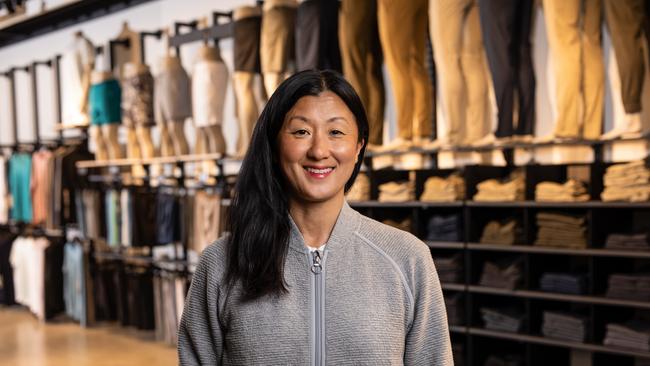
Will the activewear segment continue to grow at its current rate? At the moment it’s anyone’s guess. For Edwards, the corporate sector holds the most interest and opportunity. “All these people who still can’t go back to the office, who have always worn suits or very corporate attire every day – it feels like we’ve got a whole new market.”
Choe, too, still sees opportunity. “I would say that in some ways it’s easier [to forecast]. Only because we know work-from-home is going to be a thing of the future. We hear about tech companies rethinking the whole headquarter model. Also, we know that people wanting to be mentally fit and physically fit is only going to grow.” She says that the early signs for Q3 this year leave her “cautiously optimistic” about results.
“I think people’s health consciousness has been heightened,” says Veals from David Jones. “People who weren’t wearing activewear are now seeing the benefits. It has opened their minds to new brands. It always was an important category; Covid just accelerated the rate at which it reached a new audience.”
Edwards says with the uncertainty around how the pandemic will play out, “planning’s out the window, and rules are out the window”. While she is unsure of what will happen beyond P.E Nation’s last round of sales, which were up on the previous season across its 280 global stockists, she feels certain that “this is a global lifestyle shift for good”.
“It has changed priorities, it has changed consumer behaviour, it has changed product, it has changed the way we look at fashion,” Edwards adds. “Fashion is now function, and comfort, first and foremost. We have been brought back to reality. I like it.”
COVID TRENDS
UP
Hoodies & sweatshirts
Track pants
Anything with an elasticised waist
Leggings & matching crop tops
Lounge wear – knits, pyjamas, soft trousers
Moisturisers
Nail polish
DIY beauty products
Face masks – beauty & PPE
Ugg boots & slippers
-
DOWN
Men’s formal wear
Formal dresses
High heels
Lipstick
Colour cosmetics
Bras
